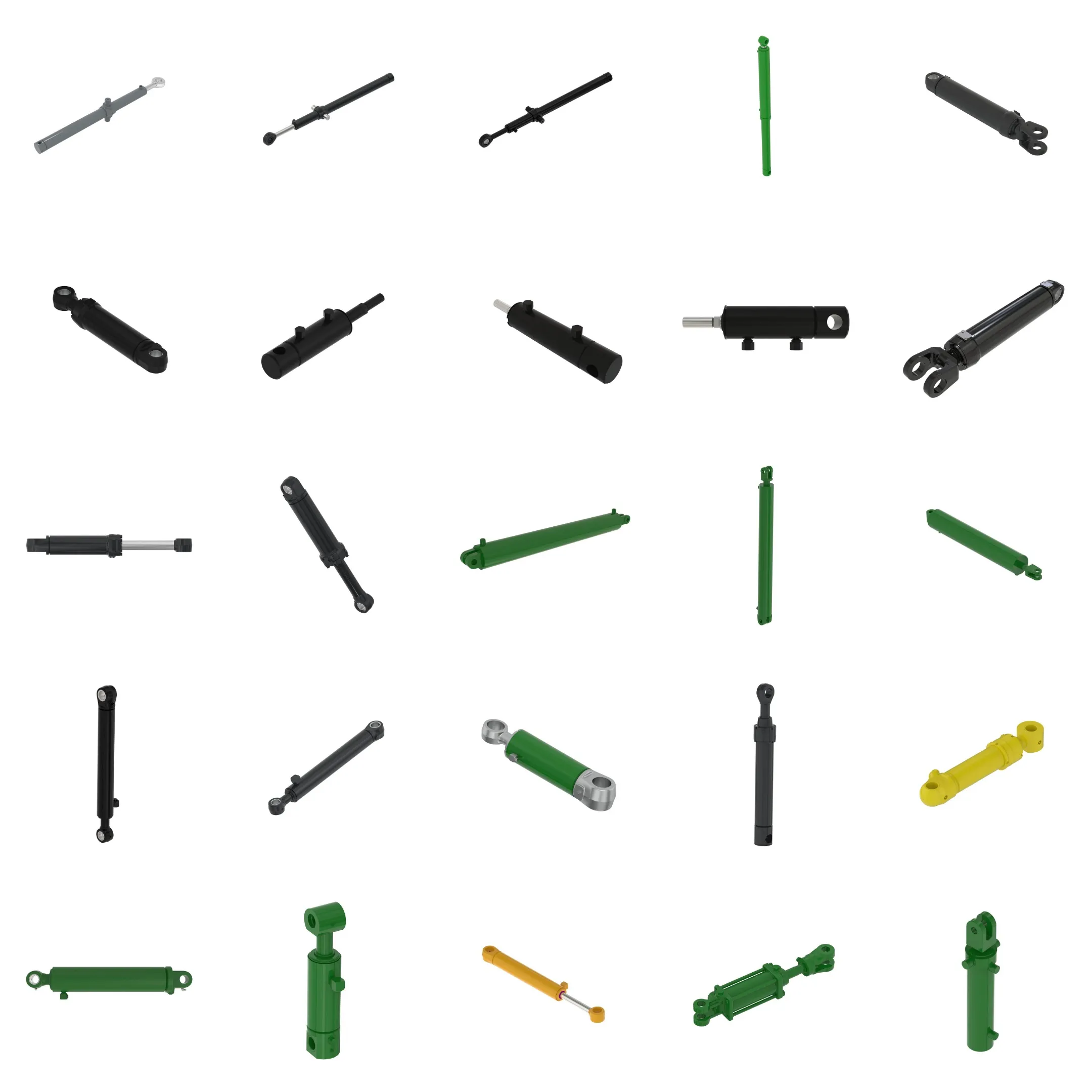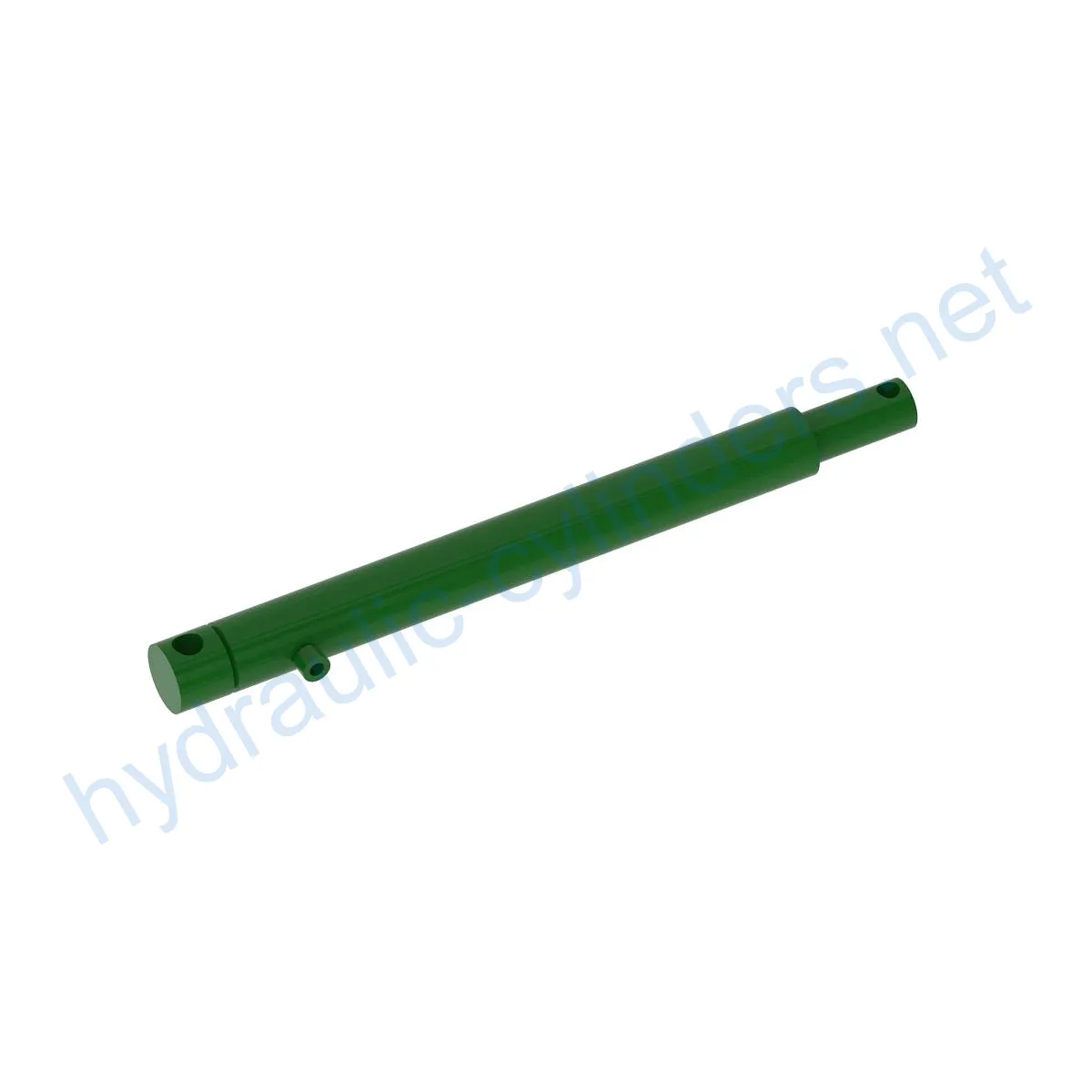Replacement Of AFH223645 Hydraulic Cylinder
En tant que fabricant, fournisseur et exportateur de produits mécaniques, nous proposons des vérins hydrauliques et de nombreux autres produits.
N'hésitez pas à nous contacter pour plus de détails.
Courrier :sales@hydraulic-cylinders.net
Fabricant fournisseur exportateur de vérins hydrauliques.
Replacement Of AFH223645 Hydraulic Cylinder
Introduction:
The Replacement Of AFH223645 Hydraulic Cylinder is a crucial component used in various machinery, such as C300, C350, C400, S250, S300, and S350 models. It is designed to provide reliable and efficient hydraulic power for different applications.
Specifications:
- Weight: 28.299 lb
- Height: 2.5 in
- Width: 3.5 in
- Length: 28.3 in
Features:
- Improved Equipment Performance:
- Enhanced Safety:
- Overload Protection:
- Quick Installation:
- Standardized Components:
Replacing damaged or worn hydraulic cylinders can restore the normal operational capability of the equipment, ensuring optimal performance in various applications.
Regularly replacing hydraulic cylinders can reduce safety hazards caused by cylinder failures, ensuring the safety of operators and machinery.
New cylinder designs often incorporate better overload protection mechanisms, enhancing overall safety.
Modern hydraulic cylinders are designed for easy installation and replacement, minimizing downtime.
Many hydraulic cylinders are standardized products, making it easier to obtain replacement parts in the market.
Applications:
- Excavators:
- Cranes:
- Tractors:
- Harvesters:
- Automated Production Lines:
- Die Casting Machines:
- Mining Equipment:
- Bulldozers:
In excavators, the hydraulic cylinder in the arm or bucket may get damaged due to prolonged use or overload, requiring replacement to restore normal operation.
The hydraulic cylinder in a crane’s boom is susceptible to wear and tear during frequent lifting and lowering, necessitating periodic replacement for safety reasons.
The front-end loader hydraulic cylinder in tractors may experience leaks or performance degradation during continuous lifting and tilting operations, requiring replacement.
During the harvesting process, hydraulic systems endure high pressures, and cylinders may get damaged due to fatigue. Timely replacement ensures work efficiency.
Hydraulic cylinders are used to control robotic arms and other automated equipment. Cylinder failures can negatively impact production efficiency and immediate replacement is necessary.
In high-pressure and high-temperature environments, hydraulic cylinders in die casting machines may experience performance degradation. Regular replacement ensures product quality.
Hydraulic cylinders are used in mining equipment for lifting and moving heavy loads. Due to harsh working conditions, regular inspection and replacement are necessary to avoid equipment failures.
On a bulldozer’s blade, wear on the hydraulic cylinder can lead to reduced pushing capacity. Timely replacement ensures optimal operational efficiency.
Maintenance:
Regular maintenance tasks for hydraulic cylinders include:
- Periodic Inspection
- Proper Lubrication
- Seal Replacement
- Calibration Checks
It is essential to emphasize the importance of correct installation, lubrication, and adjustment. Providing guidance for aligning the cylinder correctly during installation is crucial. The use of appropriate mounting brackets to secure the cylinder is recommended. Recommended inspection, repair, and replacement procedures, as well as the availability of replacement parts and rebuilding services, contribute to extending the lifespan of the hydraulic cylinder.
Safety Considerations and Environmental Factors:
When using hydraulic cylinders, prioritizing safety measures is of utmost importance. Adequate safety precautions must be followed to prevent accidents and injuries. Additionally, considering environmental factors when using hydraulic cylinders can contribute to minimizing their impact on the environment.
Troubleshooting and Common Issues:
Common issues and troubleshooting for hydraulic cylinders include:
- Leakage
- Insufficient Power
- Slow Operation
- Abnormal Noises
- Poor Seal Performance
Providing tips and solutions for diagnosing and resolving these problems will help readers effectively troubleshoot and resolve issues. Furthermore, suggesting preventive measures can minimize potential problems.

Design Considerations and Selection Criteria:
When selecting hydraulic cylinders, several design considerations should be taken into account, including load-bearing capacity, sealing efficiency, durability, safety, and maintainability.
Sealing and Lubrication:
Hydraulic cylinders utilize various sealing elements, such as piston seals and rod seals, made from wear-resistant materials like polyurethane and nitrile rubber. The cylinder body and threaded ends undergo meticulous surface treatment to enhance wear resistance. Regular lubrication with the appropriate amount of hydraulic oil is necessary for proper operation.
Regular Inspection and Preventive Maintenance:
Regular inspection and preventive maintenance are vital to ensure the longevity and optimal performance of hydraulic cylinders. Proper installation, lubrication, and adjustment are key. Providing accurate installation guidelines, aligning the cylinder correctly, recommending the use of suitable installation brackets for stability, suggesting inspection, repair, and replacement procedures, and offering tips to extend the lifespan of the hydraulic cylinder are essential components of preventive maintenance.

About Our Company:
We are a leading manufacturer and wholesale distributor of replacement hydraulic cylinders. Our company offers a wide range of hydraulic cylinders, serving both domestic and international markets.
Our Specialties Include:
- Professionalism
- International Certifications
- Customization Services
- Advanced Production Equipment
- Comprehensive After-Sales Service

Author: lyl
Visitez notre usine de RV :
Visitez notre usine de RV avec les éléments suivants
Vérin hydraulique Application :


